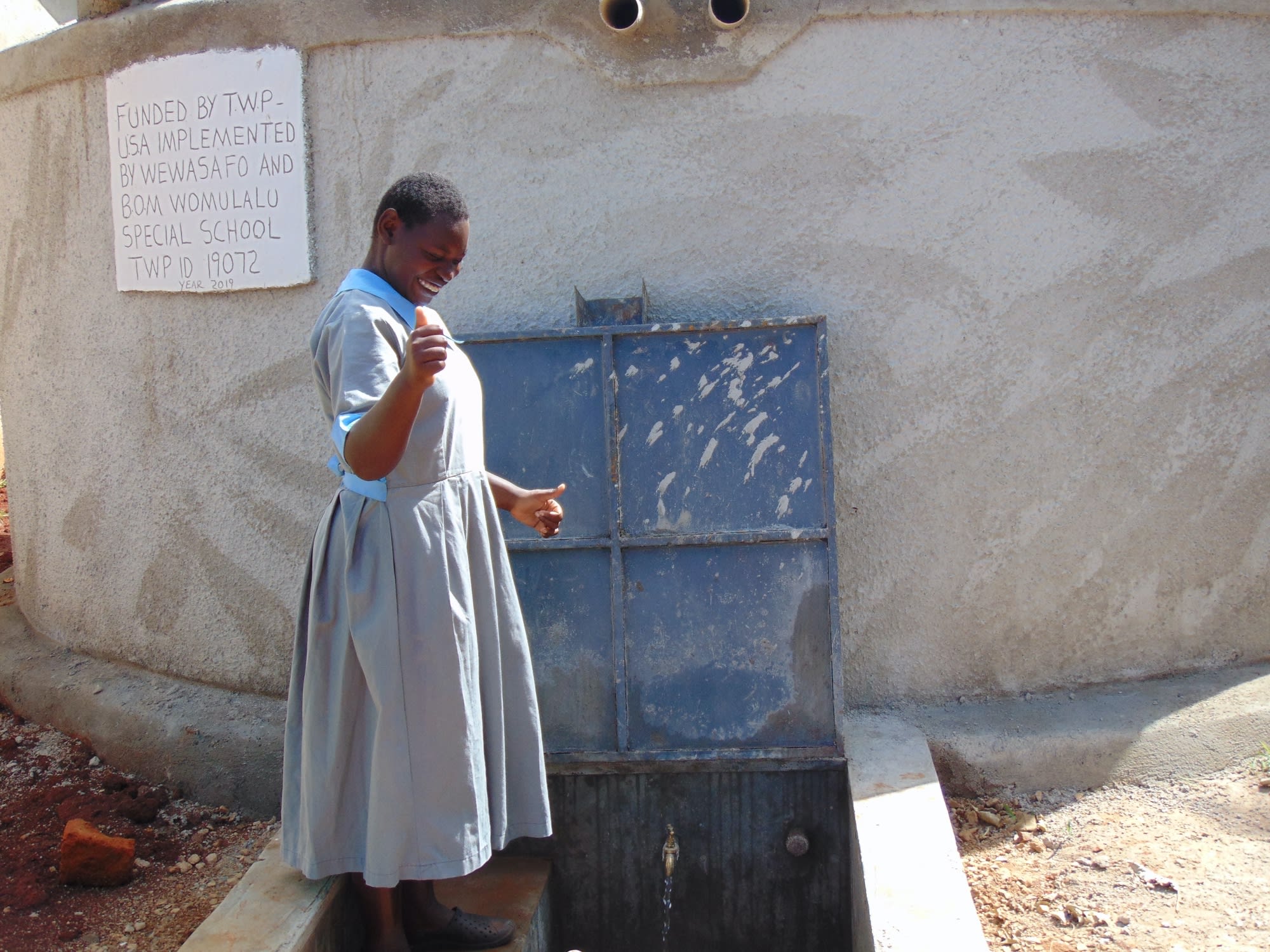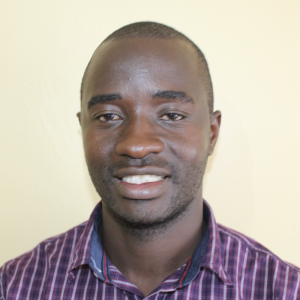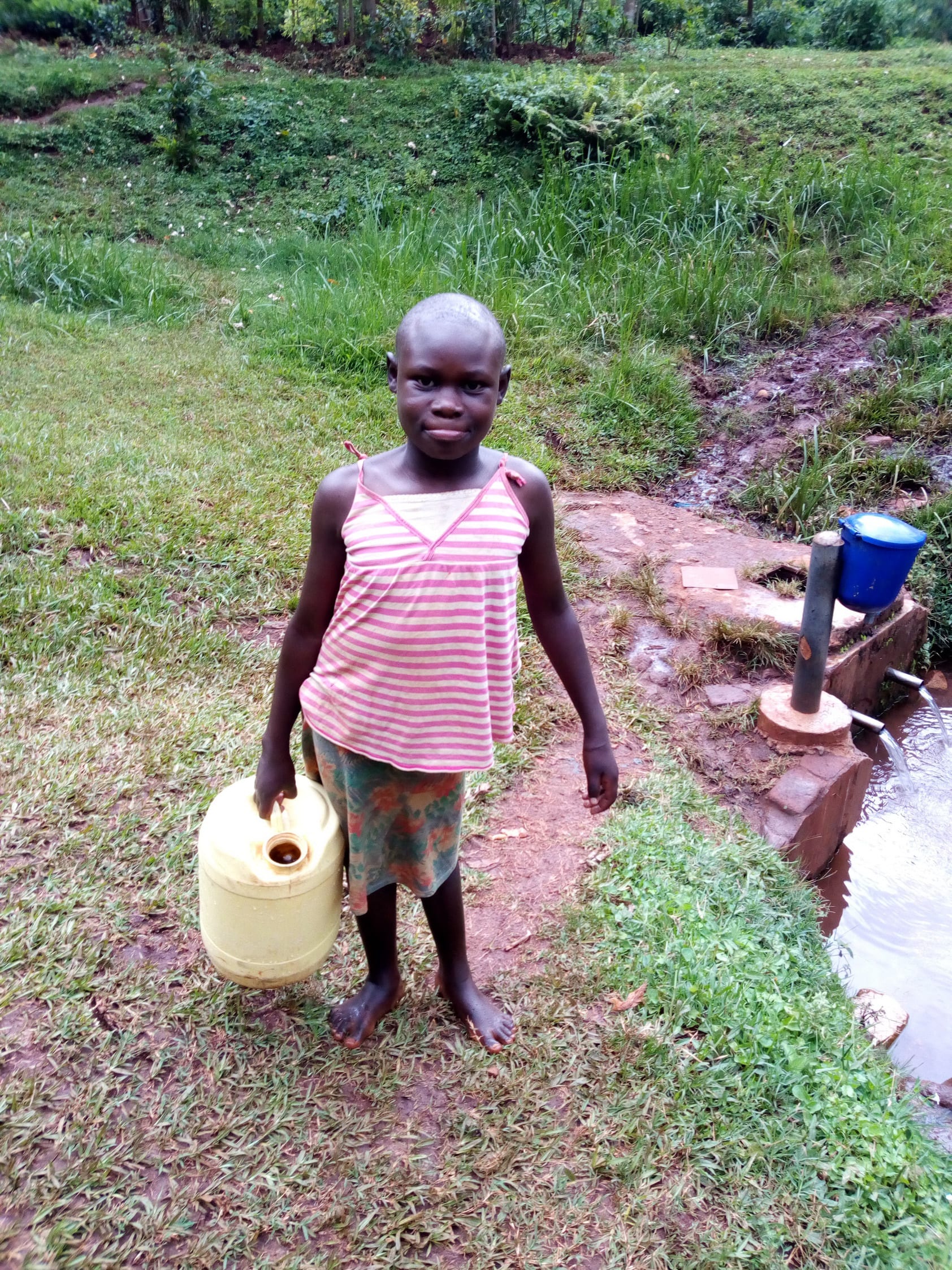November, 2019: Womulalu Special School Project Complete!
Womulalu Special School in Kenya now has access to a new source of safe, clean water thanks to the completion of their rain tank, which has the ability to collect 50,000 liters of water. We installed new latrines for students, handwashing stations, and we trained students and staff on improved sanitation and hygiene practices. All of these components work together to unlock the opportunity for these students to live better, healthier lives.

Smiles at the rain tank
Rain Tank
Construction for this 50,000-liter rain tank was successful!
Parents, staff, and students helped our artisans gather everything needed for construction. The first day the lorry carrying the hardware materials made its way into the school compound, the joy upon everyone's faces could not be hidden as they knew this marked the end of their struggles in searching for water. The pupils too were not left out and they gathered around this huge truck to see for themselves what it had for them. They quickly started assisting the turn boy to offload the materials and in no time everything was safely kept in the store. Then, the artisans arrived and work commenced.
All the while, the school cooks prepared meals for the artisans, including tea breaks and lunches that energized the artisans to keep working each day. The school provided accommodations for the artisans during their work by temporarily giving up one of their classrooms. Local women and men helped our artisans with their manual labor, too.
The process officially began with our staff and school administration looking around the school compound to try and determine the best location for a new rain tank. This needed to be the best site with good, clean roofing to catch the rainwater.

Adding water to the rain tank's stone and concrete foundation
Then, we cleared the site: excavating the soil within the required measurements to make level ground for the tank foundation. The foundation was cast by laying hardcore on level ground and then reinforcing it using steel, concrete and waterproof cement.

Cementing rain tank walls
Both the drawing pipe as well as the washout pipe were affixed as the foundation was laid. The wall was built with ferro-cement techniques through 6 layers. The inner wall was plastered while rough casting was done on the outer part. Finally, the catchment area was dug, plastered, and a staircase installed.

Connecting the dome form to the rain tank
Dome construction could begin after the superstructure had been given enough time to settle. The manhole cover was fitted, inlet pipes were connected to the roof gutters, inlet screens, ventilation pipes (breathers) and overflow pipes were all done to standard. The works were only halted for 1 day to allow everyone to celebrate the National Mashujaa (Heroes') Day. This, however, did not affect the ultimate timeline of the work as all was completed as expected.

Tap area construction
Once finished, the tank was given 3 to 4 weeks to undergo complete curing before it was cleaned and handed over to Womulalu Special School, though we will continue to offer them unmatchable support as a part of our monitoring and maintenance program. Since the school was closing for the long holidays immediately following the tank's completion, the head teacher said she intended to lock up the water tank so that once the pupils resume school in January they will have enough water for easy use. During the school days, the water will also be rationed during the day and only opened at scheduled times so as to prevent waste.
Though there will be a bigger and more formal handing-over celebration once school is back in session in January, when the tank was completed we attended a small gathering to mark this important milestone for the school.

This was a great chance for us to acknowledge the school administration and students as the primary parties entrusted with the tools we’ve given, as well as remind them of our continued support as they develop. Words of thanks were shared among our staff, teachers, and students.
"I am very grateful to you for the wonderful gesture that you have demonstrated by providing our school with safe and clean water," said Head Teacher Madam Lilian Lusanji.
"Due to my pupils being intellectually and sometimes physically challenged, they need a lot of water for cleaning and washing and you cannot send them as other able-bodied pupils to go and fetch water outside the compound. They will either get lost or are put at risk of being knocked down by the fast-running motorbikes outside the school gate," she continued.
"I look forward to a smooth-running term next year with water flowing in the taps. On behalf of the whole school, I really want to render our appreciation to you for considering us. God bless you all."

VIP Latrines
This project funded the installation of 6 new ventilated improved pit (VIP) latrines, half for girls and half for boys.

Girls in front of their new latrines
All of these new latrines have cement floors that are designed to be easy to use and clean. And with a rain tank right on school property, there should be enough water to keep them clean.

Thumbs up from the boys latrines
Handwashing Stations
The 2 handwashing stations were delivered to the school and handed over to the student health club. These were placed outside of the girls’ and boys’ latrines to encourage handwashing after latrine use.

Students and staff at a handwashing station
With the support of school staff, health club members will teach other students how to properly wash their hands at the stations, make sure the stations are filled with water, and work to ensure that there is always soap or ash available.
New Knowledge
Mobilization for the hygiene and sanitation training at Womulalu Special School was a great experience. This is because all of the pupils were interested in being part of this unique event in their school, but for purposes of coordination, only about half of them could be selected for the training.
The chosen date for training was also carefully selected considering that the school was closing the next day, so the training had to be done before the pupils went away on their break. Head Teacher Madam Lilian Lusanji was extremely helpful in coordinating the other teachers and students during this process. In the end, 26 students attended the training.
On the day of the training, the weather was cloudy and cool in the morning hours. This was very conducive for training as the participants sat under a tree and enjoyed the cool breeze. Each student participated well and all were very interested in the training.
We covered a number of topics, including personal hygiene such as bathing, oral hygiene, and handwashing with soap as a barrier from germs; and operation and maintenance of the new facilities, with each person understanding their role for long-lasting clean water and good health. The new student health club will be greatly involved in project management and will be responsible for encouraging good health and hygiene practices amongst their peers, teachers, and the larger community.

Handwashing practice at training
Before we dove into any of these topics, however, we first did an introduction exercise among the students and facilitators. This was the first memorable moment of the day. Each pupil was asked to introduce themselves while stating something they liked and disliked so as to break the ice before the training commenced. One of the pupils made everyone burst out laughing when he mentioned that he loved chicken and ugali (corn porridge) and could not wait to be home the next day and eat chicken!

Learning about toothbrushing during the dental hygiene session
The other most memorable moment was during the dental hygiene lesson. After brainstorming dental diseases, we discussed the proper ways of brushing one's teeth and why it is important to observe dental hygiene. One of the pupils, 12-year-old Cynthia, volunteered to demonstrate to others how to brush her teeth.

Cynthia brushes her teeth
It was her first time in life to ever hold a toothbrush and brush her teeth. At first, some pupils laughed at her but she pressed on, oblivious of their jeers. After some time she grasped the concept and could not stop as this new hygiene practice was such an amazing thing that she had never experienced in her life. The best moment was when she was rewarded the very same toothbrush to take home and she was all smiles.
"Since I was born I have never brushed my teeth with a toothbrush and paste and today is a very memorable day for me. I am happy that I have learned to brush my teeth and now I won't have [a] smell in my mouth ever again," shared Cynthia while smiling.

Happy faces after completing training
The training seemed to have had an immediately positive impact on the pupils as they were seen trying out several times to wash their hands the proper way immediately after the training. This was a positive indicator of their progress toward better hygiene and health.
Thank you for making all of this possible!


 Rainwater Catchment
Rainwater Catchment
 Rehabilitation Project
Rehabilitation Project




































